West Coast Represents at Exchange Rates Bushwick
In hip-hop, the East Coast-West Coast rivalry has died down since the days of 2Pac and Notorious BIG, but perusing last week's Exchange Rates expo in Bushwick you could easily have gotten the impression that it was now raging in the art world — and that West Coast artists and galleries are killing i
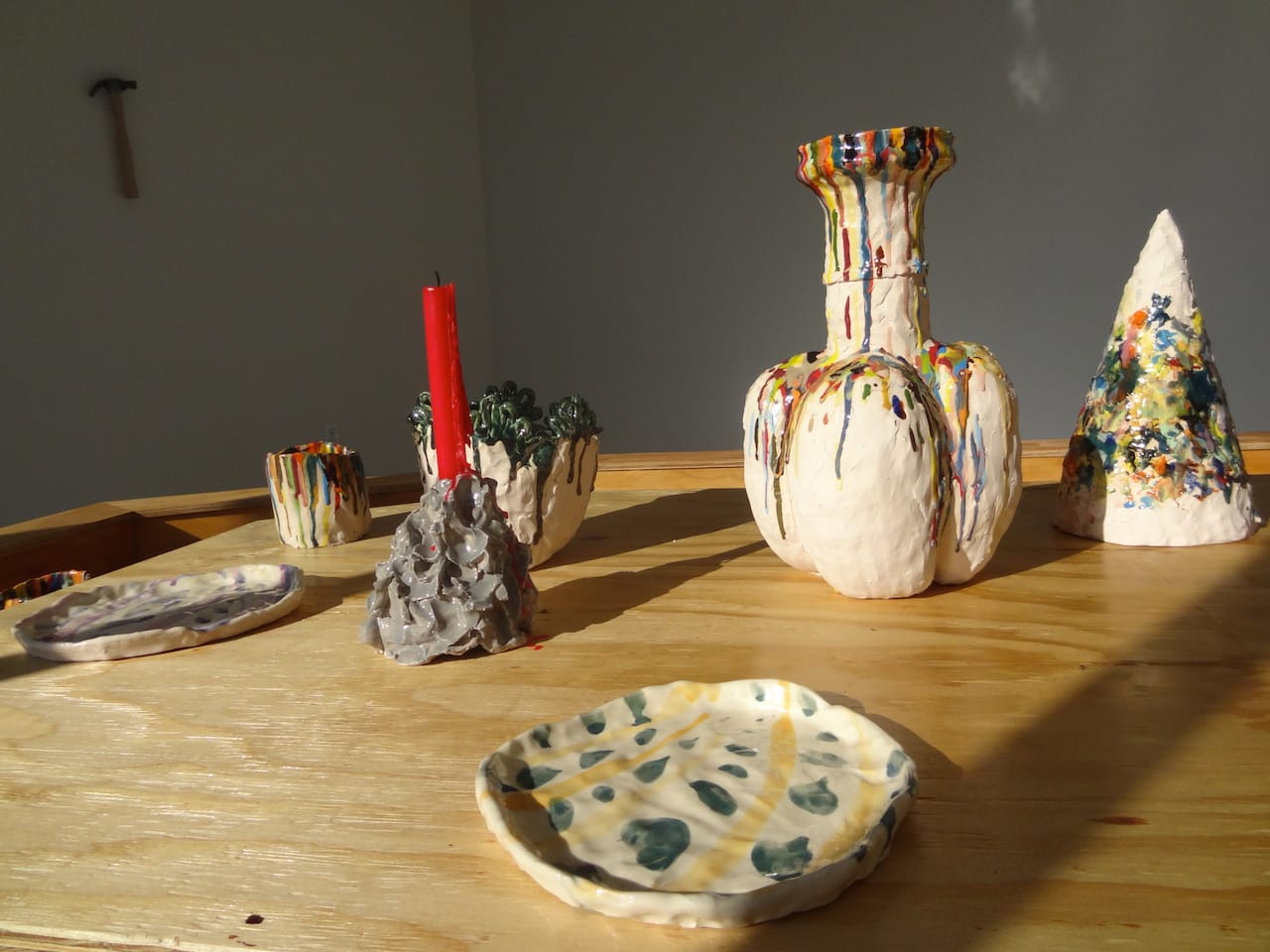
In hip-hop, the East Coast–West Coast rivalry has died down since the days of 2Pac and Notorious BIG, but perusing last weekend’s Exchange Rates expo in Bushwick you could easily have gotten the impression that it was now raging in the art world — and that West Coast artists and galleries are killing it. Los Angeles’s Durden and Ray, Tacoma’s Spaceworks, and Seattle’s Season mounted what were, to me, some of the expo’s most compelling and revelatory exhibitions.
Watch the Moat
The best thing at the Vazquez Building, the unofficial focal point of Exchange Rates, was not in the cavernous main space but around the corner in the all-white storefront, where Tacoma’s Spaceworks and Bushwick’s Generis collaborated on a seven-artist show featuring three Brooklynites collaborating with four West Coast artists. The centerpiece, a low wooden table built by Megan Stockton and equipped with a fast-flowing moat, hosted an arrangement of playful and drippy ceramic sculptures by Nicholas Nyland. Additional sculptures by Nyland floated around the table’s circumference, like so many California rolls at a novelty sushi bar.
Despite the impressive Nyland-Stockton apparatus, the subtle and creepy pleasures of Sarah Gilbert’s sculptures — a hammer and clamps that have sprouted steel fingers where nobs and notches ought to be — were the show’s most memorable entries.

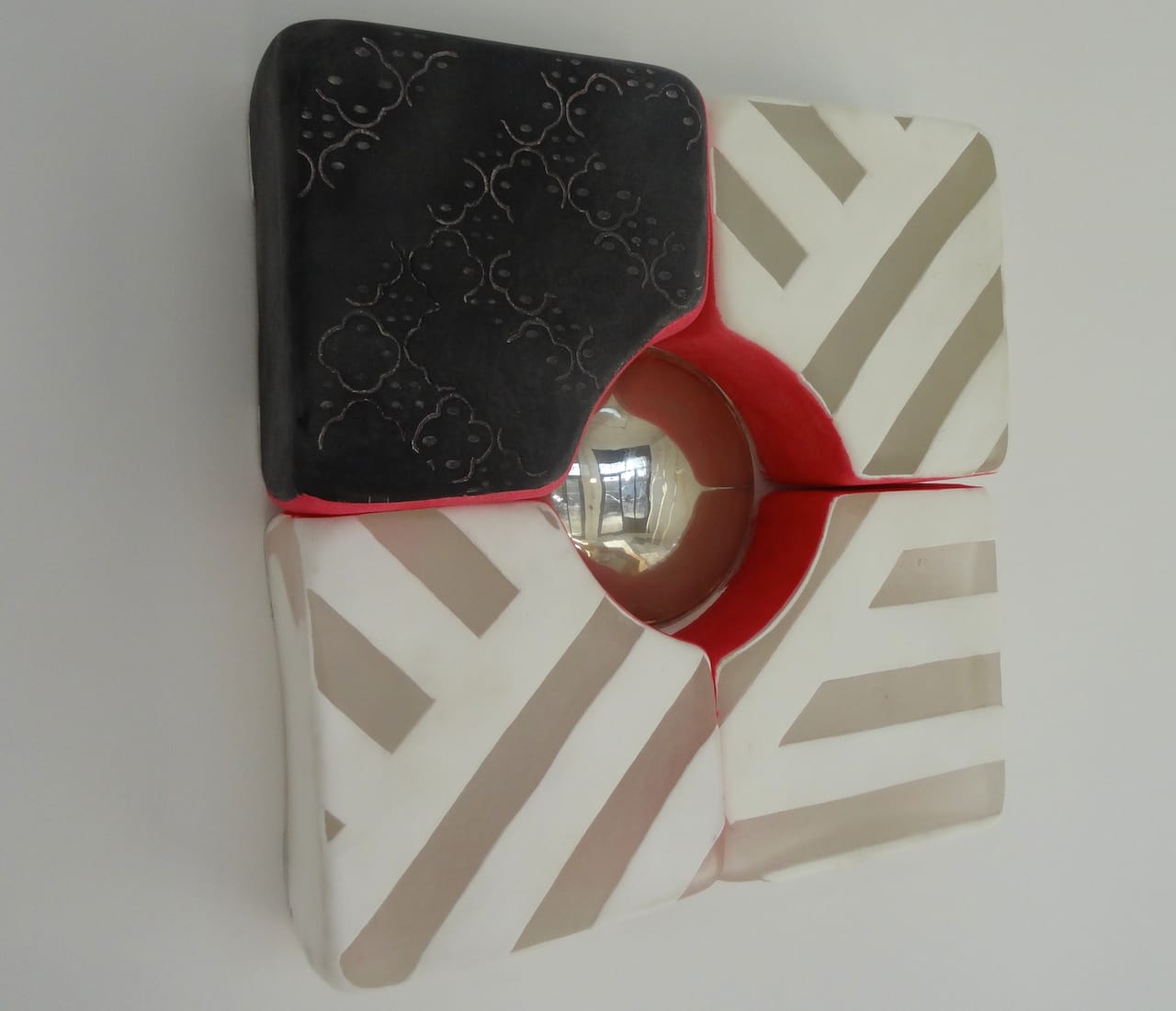
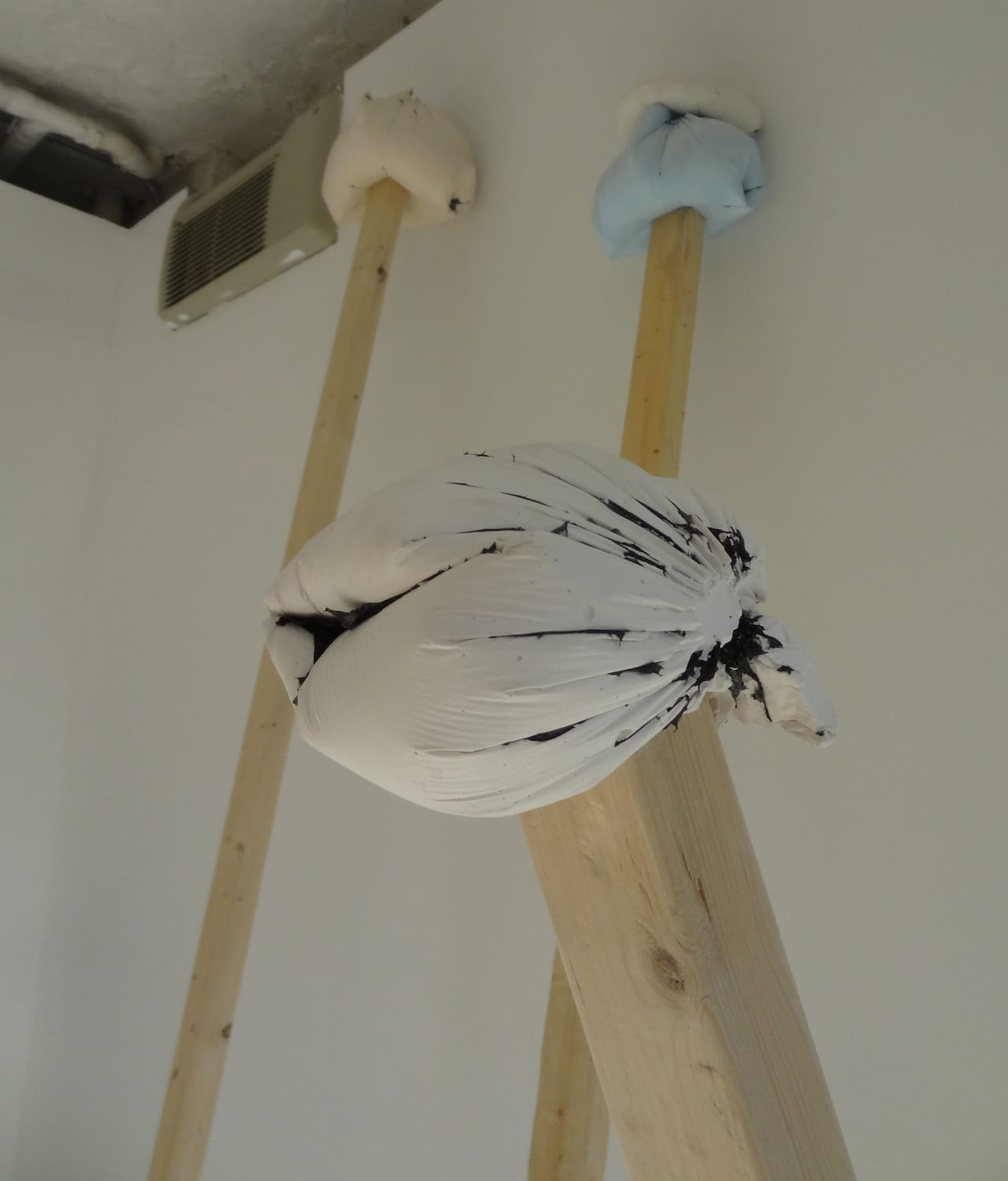
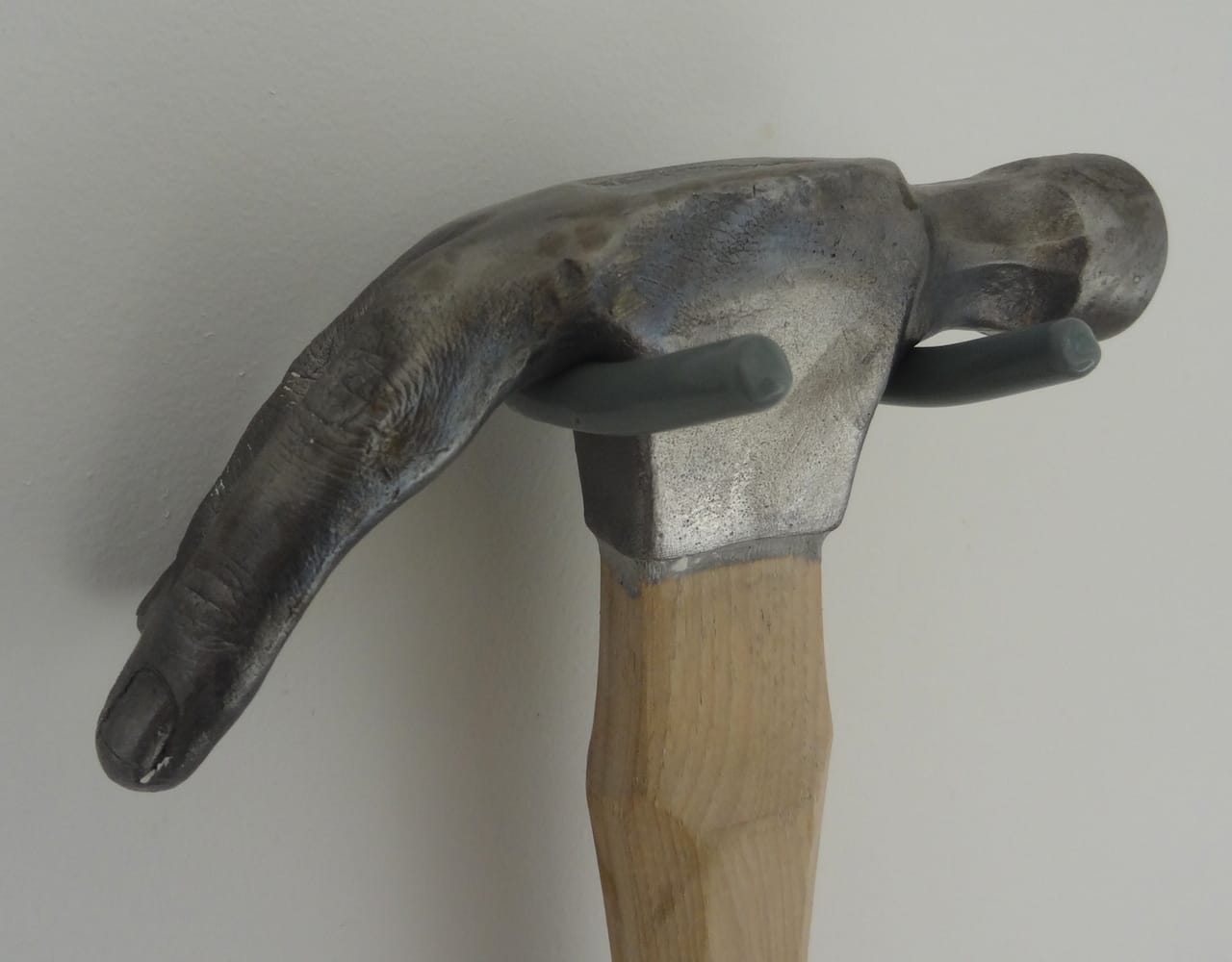

LA Noire
In the front room of Norte Maar, artist and curator David French of Los Angeles’s Durden and Ray hung mostly funny, colorful, and playful works, including Max Presneill’s large canvas “Interstitial” (2014), which resembles what a good Oscar Murillo painting might look like, if such a thing existed, and Jon Flack’s rendering of pained and entangled wrestlers. But Grant Vetter’s disturbingly seductive painting “Untitled” (2011) — which might be the closest thing to a slab of raw meat anyone has hung on a gallery wall since Paul Thek — hinted at the darker works in the gallery’s back room.
There, The Great Wrong Place took up the task of exposing the dank, dripping, and frightening spaces lurking behind Southern California’s sunny and manicured façade. Pieces like Nick Brown’s “The Wall” (2013) — which evokes a point-of-view shot from the perspective of a murderer in a slasher movie, rendered in heaping gobs of black, purple, brown, and blue paint — and French’s spiky and kinky sculpture “Kane and Abel” (2014) drove home the exhibition’s dual themes of alluring surfaces and the sordid impulses they often conceal.
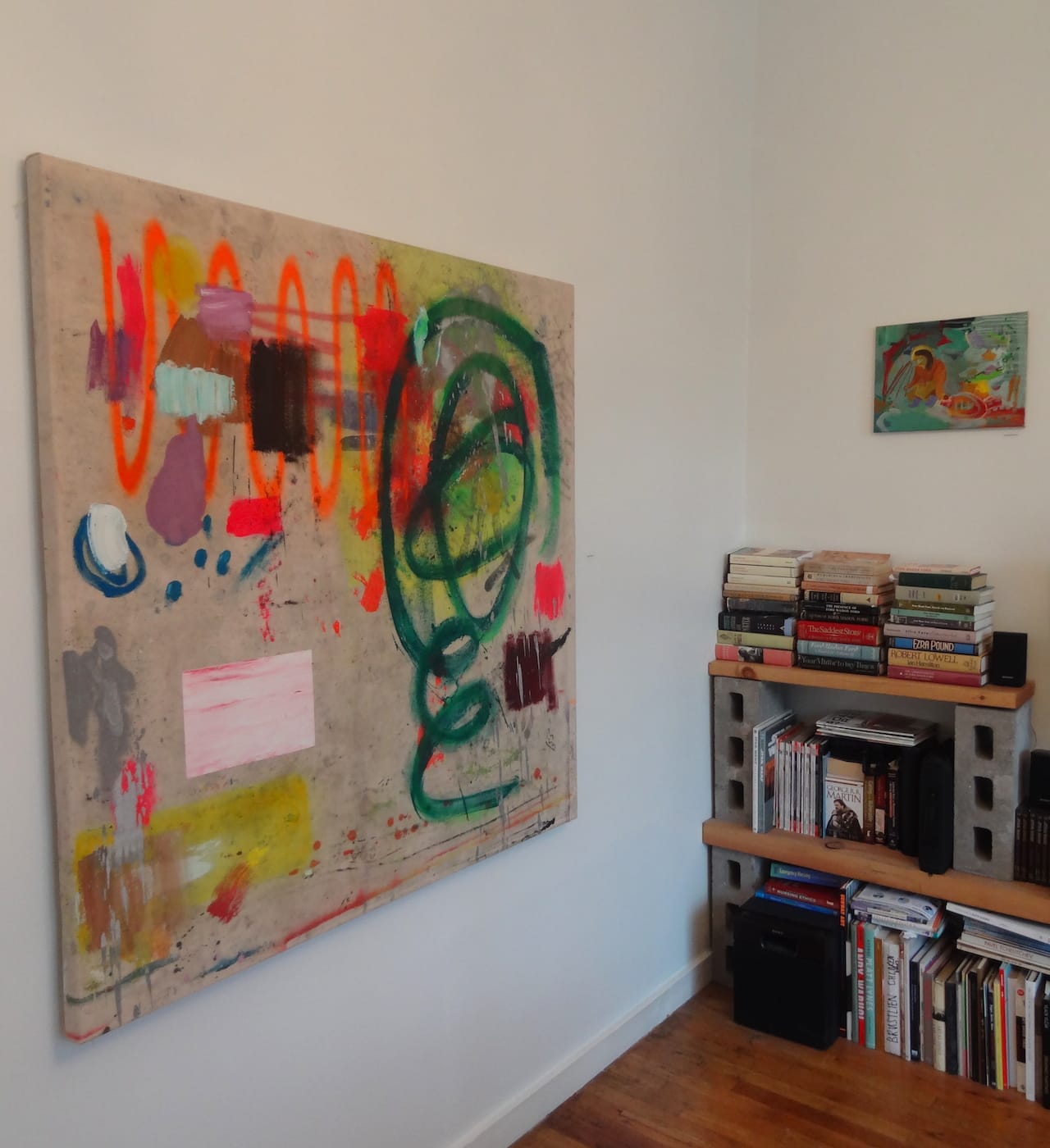
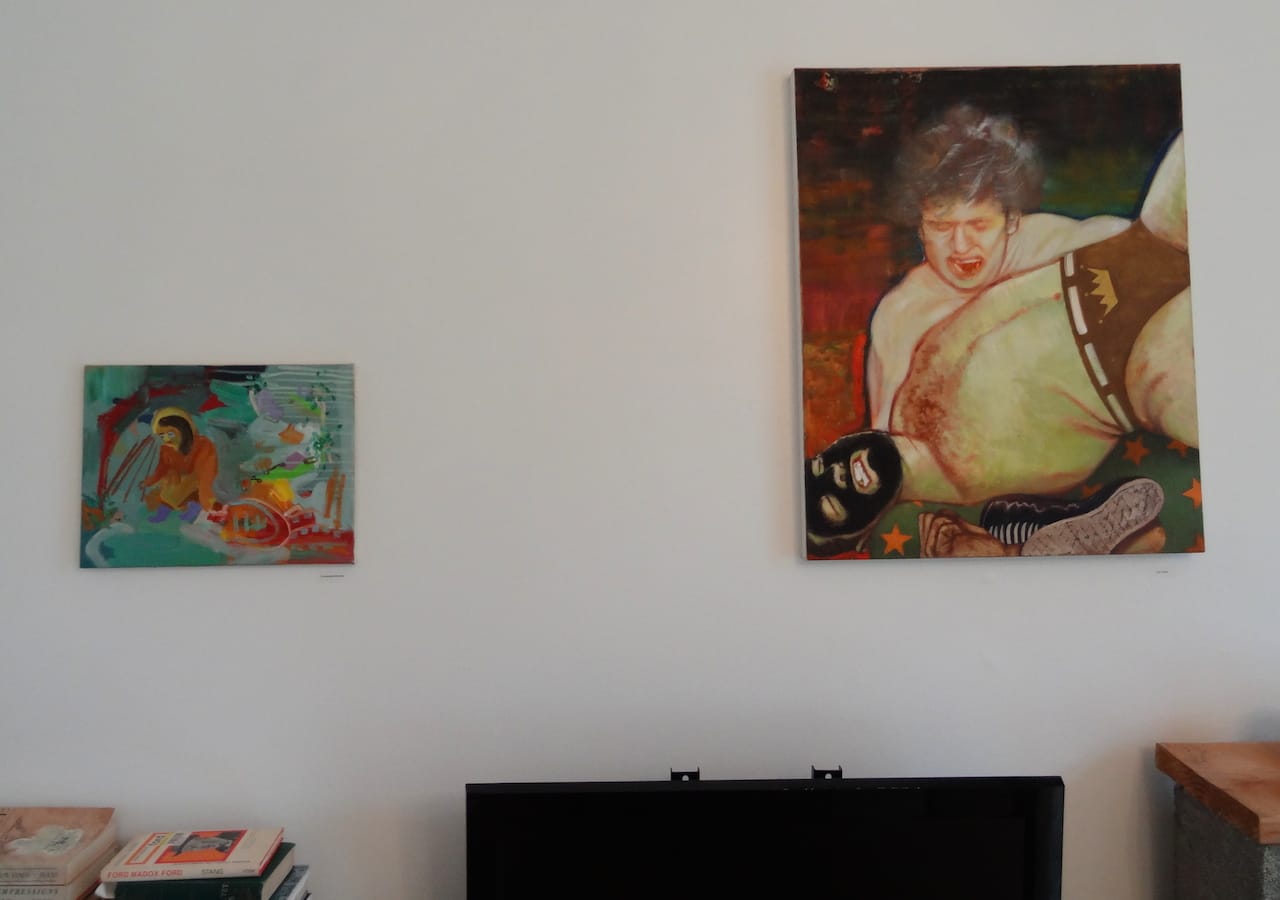
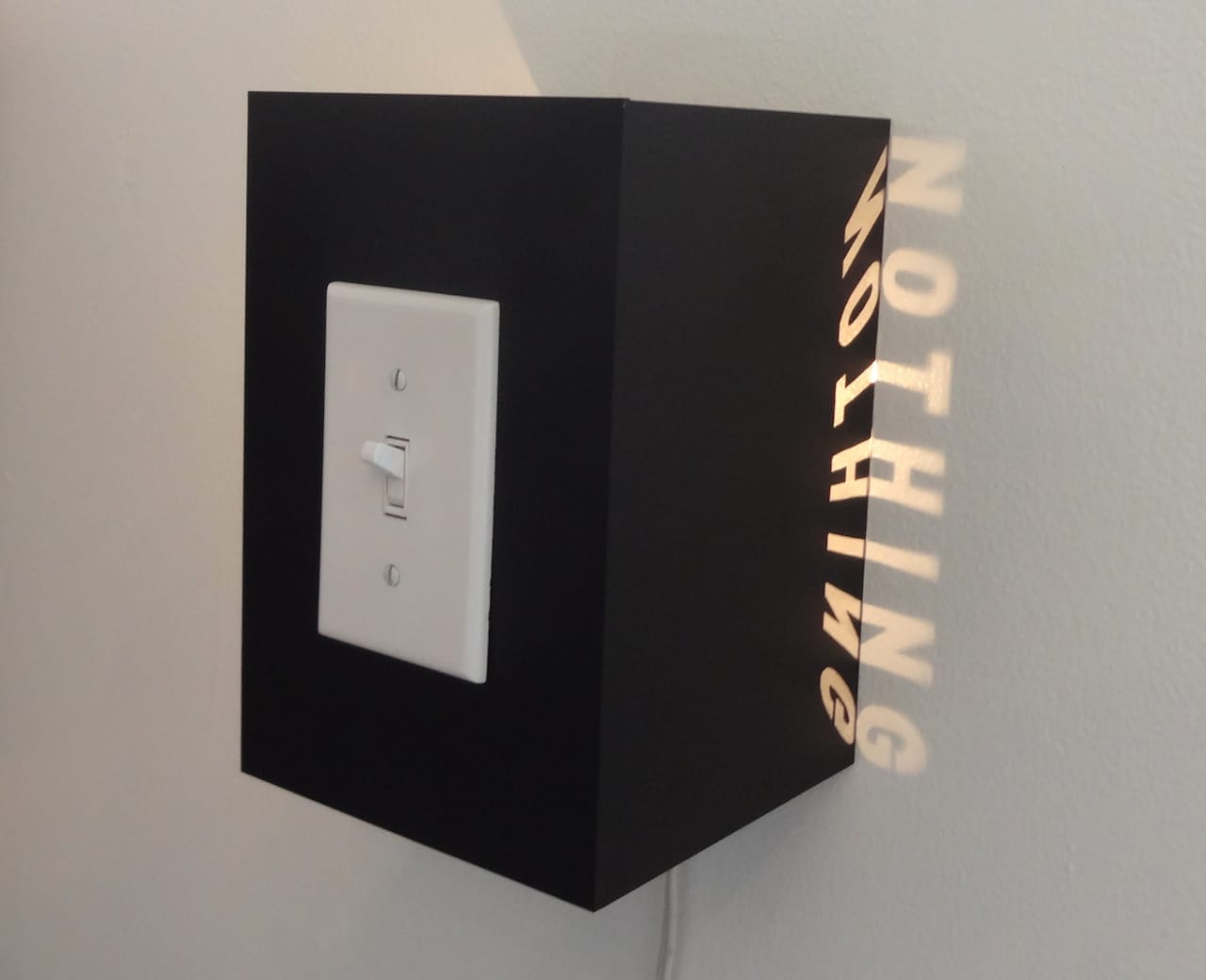
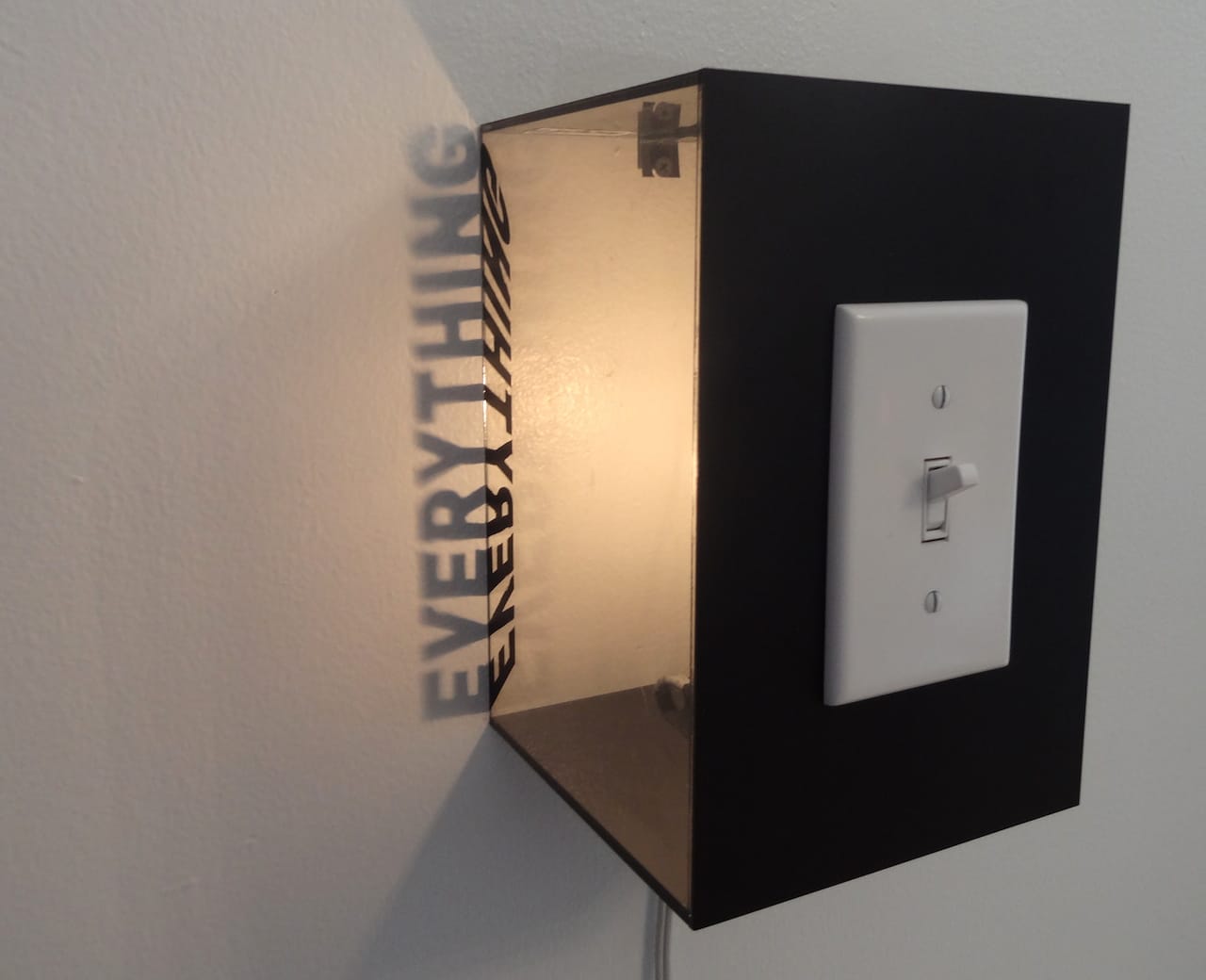


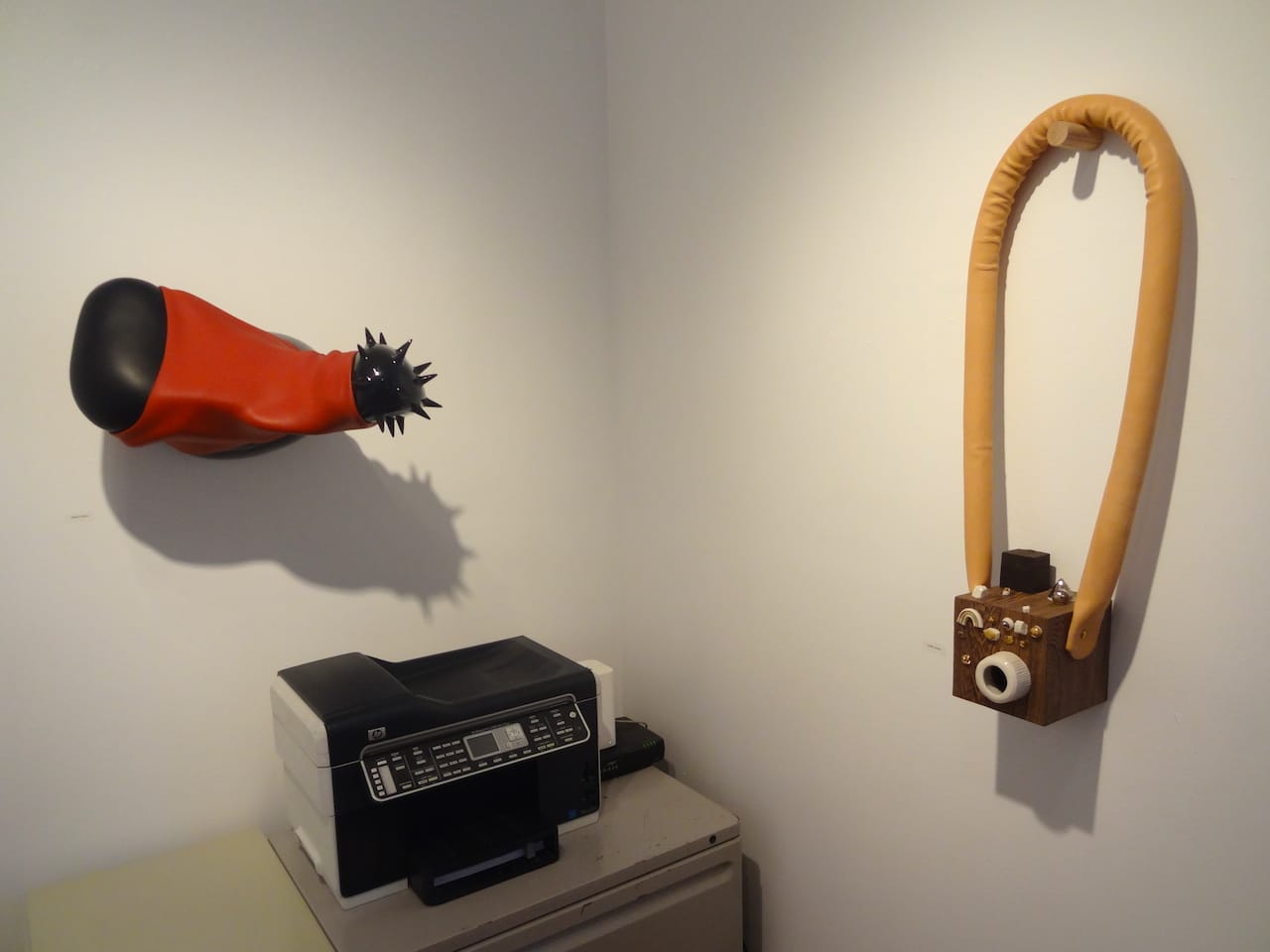
Hands On
Seattle gallery Season also catered to viewers’ tactile desires, albeit in a much less ominous manner: with Seth David Friedman’s small sculptures, which visitors were invited to pick up from their stands around Theodore:Art’s space to feel the different textures and weights of the works. Friedman’s sculptures, made of bronze sheathed in colorful children’s bandages, gold-plated bronze, jet-black and brightly colored silicone, combine forms from sex toys, modernist sculptures, and archaeological tools, making for hybrid artifacts that seemed simultaneously naughty and precious, contemporary and ancient.
The other artist that Season Director Robert Yoder brought across the country also played on the senses, but not in such a hands-on manner. Michael Ottersen’s abstract, duochrome paintings reward close observation, their thickly layered surfaces giving way to the occasional line of raw or primed canvas for a pleasing interplay of textures, tones, and modes of application.
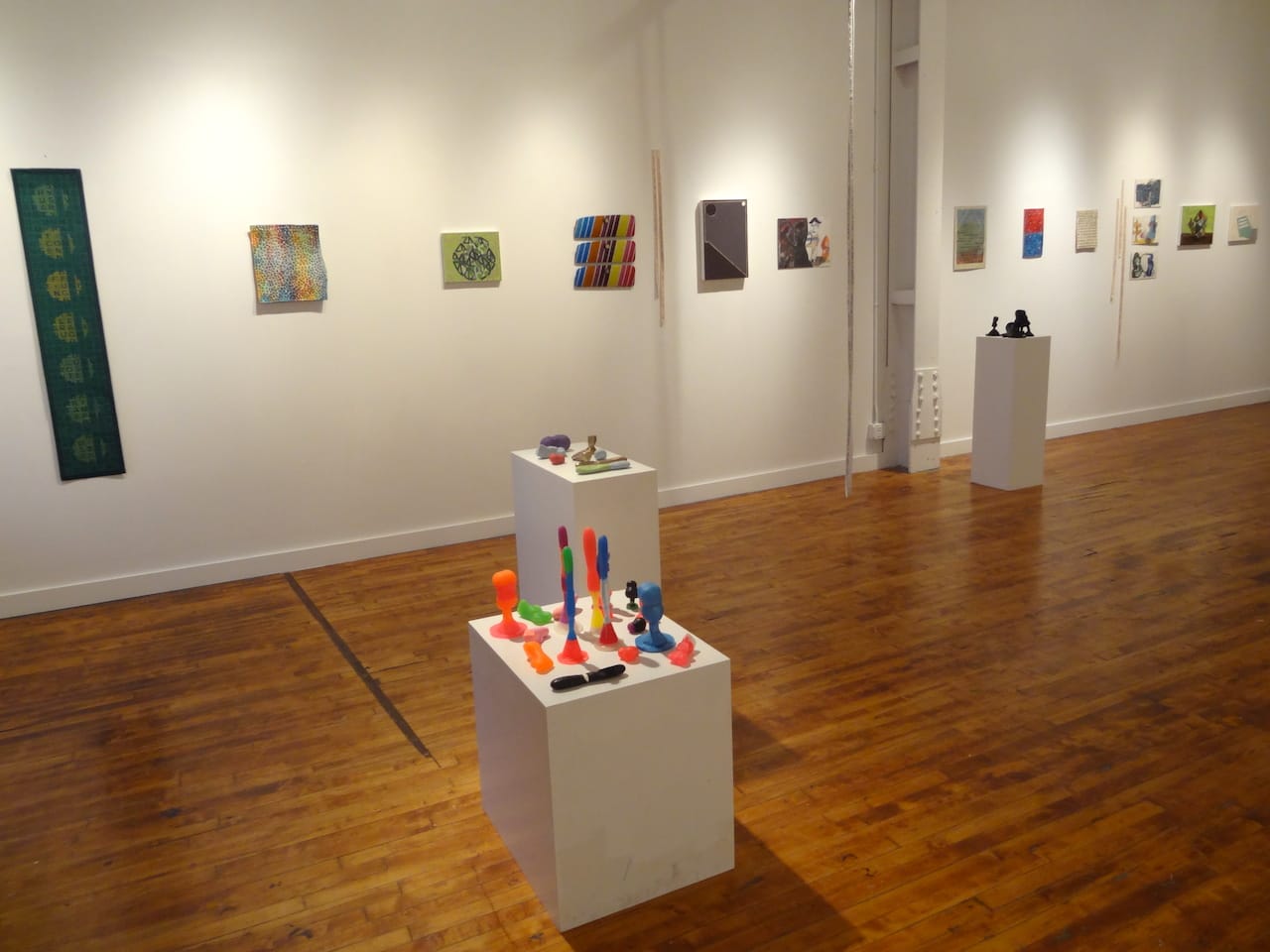


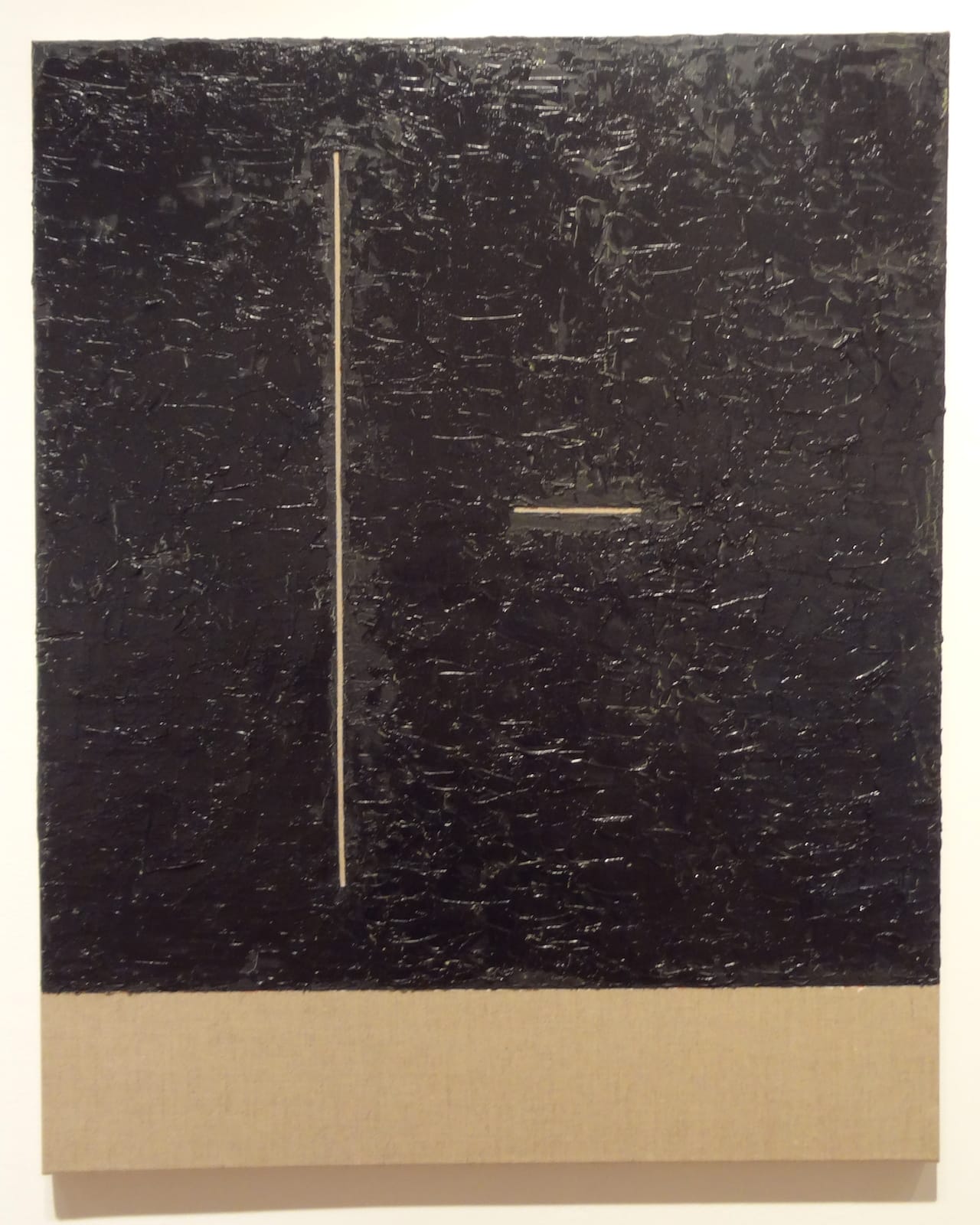
Exchange Rates, of which Hyperallergic is a media sponsor, took place October 23–26 at various locations in Bushwick, Brooklyn.




